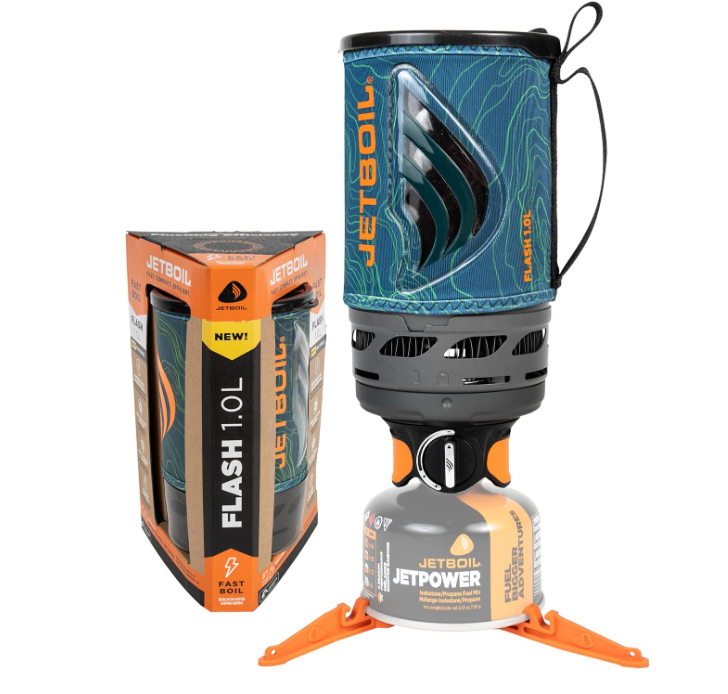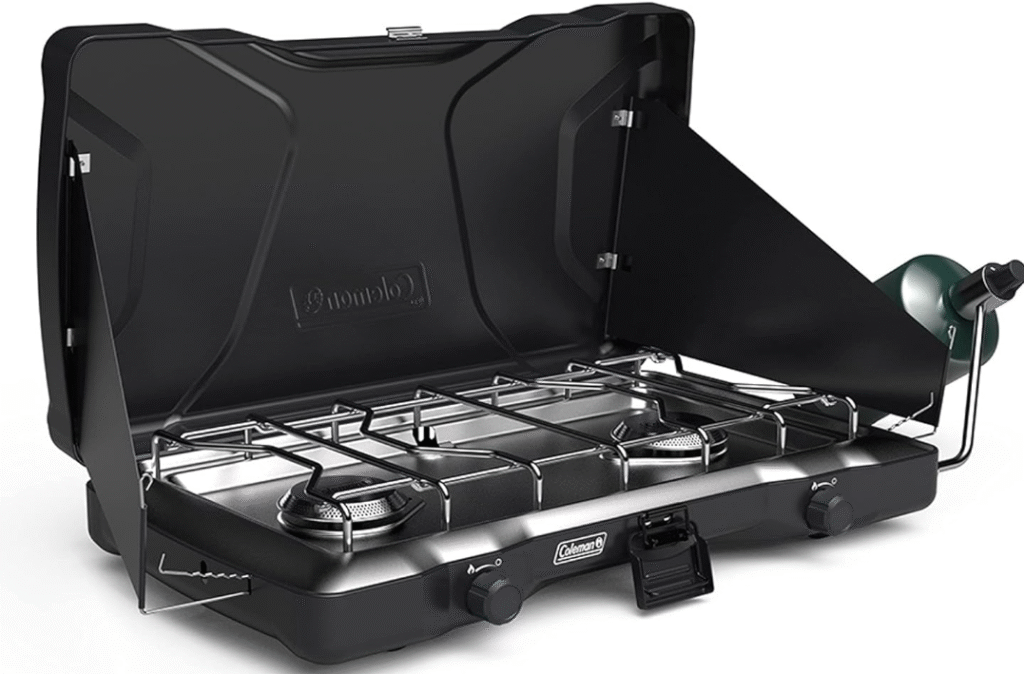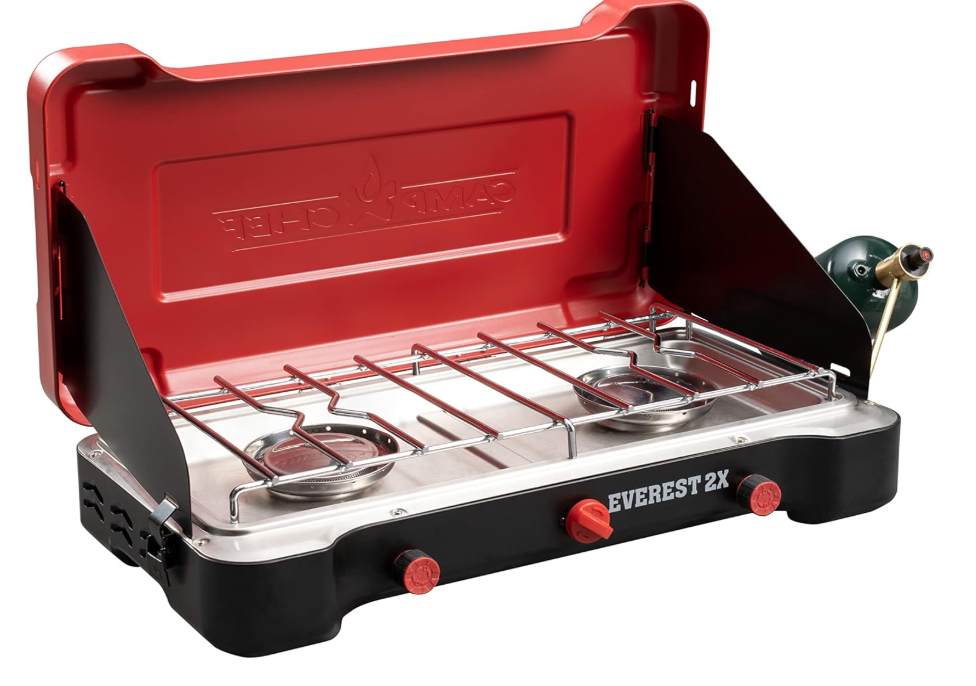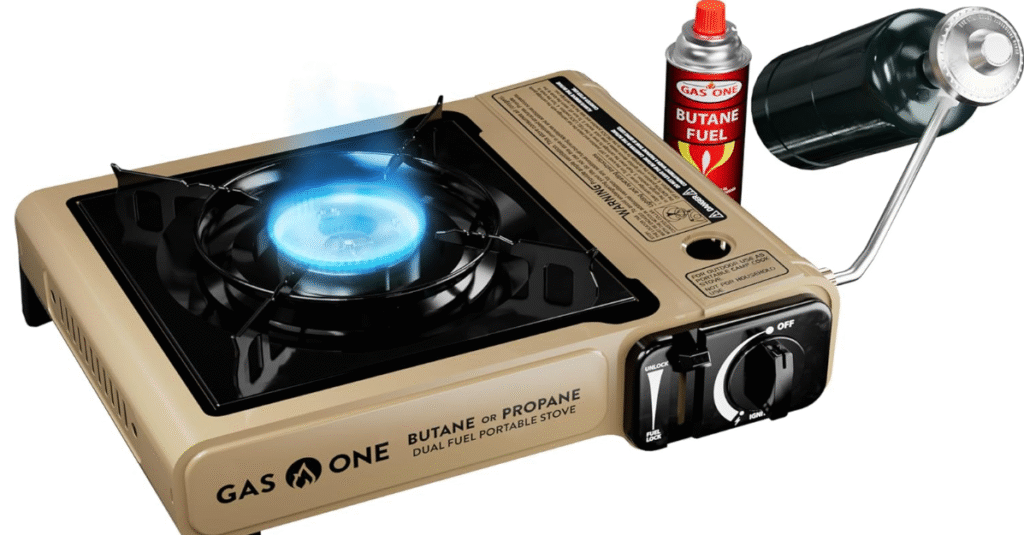When I started testing camping stoves, I wanted to find out which models could actually make outdoor cooking feel effortless instead of stressful. Over the past few months, I’ve taken these stoves on short backpacking trips, car camping weekends, and even a windy overnight hike just to see how they handle real-life situations. From boiling water fast at high altitudes to cooking pancakes for a group of friends, I put them all through the same tests.
If you’ve ever been stuck with a stove that takes forever to boil water or one that eats through fuel way too quickly, you know why choosing the right one matters. In this guide, I’ll share what I learned about the five most popular camping stoves you can buy today, along with honest pros and cons for each.
Before diving into reviews, here are a few key questions to ask yourself when choosing a stove:
- Will you be backpacking or car camping most of the time?
- Do you usually cook for one person or a group?
- How important is boil speed versus simmer control?
- Do you prefer canister fuel, propane bottles, or dual-fuel flexibility?
- What’s your budget?
Types of Camping Stoves
| Stove Type | Best Use | Examples |
|---|---|---|
| Integrated canister stove | Ultralight backpacking, fast boiling | Jetboil Stash, Fire-Maple Star X2 |
| Two-burner propane stove | Car camping, group cooking | Coleman Triton, Camp Chef Everest |
| Dual-fuel stove | Emergency use, versatility | Gas One GS-3400P |
Our Top Picks by Category
| Category | Product |
|---|---|
| Best Ultralight Backpacking Stove | Jetboil Stash Portable Camping Stove Cooking System |
| Best Budget Backpacking Stove | Fire-Maple Star X2 Personal Cooking System |
| Best Car Camping Stove | Coleman Triton 2-Burner Propane Camping Stove |
| Best Premium Car Camping Stove | Camp Chef Everest 2-Burner Stove |
| Best Dual-Fuel Option | Gas One GS-3400P Dual Fuel Portable Stove |
Detailed Hands-On Reviews
Jetboil Stash Portable Camping Stove Cooking System

Best for: Ultralight backpacking and fast boil times
Why We Like It: The Jetboil Stash weighs just 7 ounces but can boil two cups of water in under three minutes. It’s designed for serious backpackers who care about weight savings without compromising performance.
Pros
- Extremely lightweight at 7.1 oz
- Fast boil time (under 3 minutes for 2 cups)
- Pot and burner nest together neatly
- Reliable in windy conditions with proper shielding
Cons
- No built-in igniter (requires lighter/matches)
- Small pot size not ideal for group cooking
- Price is higher than most ultralight options
Fire-Maple Star X2 Personal Cooking System

Best for: Budget-friendly solo backpacking
Why We Like It: The Fire-Maple Star X2 is often compared to Jetboil systems but at a fraction of the price. It still manages a quick boil time and packs easily for solo trips.
Pros
- Affordable compared to Jetboil
- Quick boil time (around 3–4 minutes)
- Includes integrated pot with heat exchanger
- Lightweight and compact
Cons
- Build quality not as rugged as Jetboil
- Pot size limited to solo use
- Less efficient in strong winds without extra shielding
Coleman Triton 2-Burner Propane Camping Stove

Best for: Car camping with family or groups
Why We Like It: I tested this on a weekend car camping trip and loved how easy it was to cook breakfast for four people at once. Both burners deliver solid heat and have decent simmer control.
Pros
- Affordable for a two-burner
- Each burner puts out 11,000 BTUs
- Large cooking surface fits two 10-inch pans
- Wind-blocking panels work well
Cons
- Heavier and bulkier (best for car camping)
- Not as high-powered as premium models
- Needs a flat surface to stabilize properly
Camp Chef Everest 2-Burner Stove

Best for: Premium car camping and gourmet cooking outdoors
Why We Like It: With 20,000 BTUs per burner, this stove feels like cooking on a home range. During testing, I managed to simmer pasta sauce on one side while boiling water on the other with no issues.
Pros
- High heat output (20,000 BTUs per burner)
- Excellent simmer control
- Sturdy construction with reliable ignition
- Fits larger pots and pans
Cons
- More expensive than Coleman Triton
- Bulkier, takes up space in the car
- Heavier to carry around campsites
Gas One GS-3400P Dual Fuel Portable Stove

Best for: Versatility and emergency preparedness
Why We Like It: The GS-3400P can run on both butane and propane, making it a solid choice if you want fuel flexibility. I tested it at home during a power outage, and it worked flawlessly for cooking full meals.
Pros
- Dual-fuel compatibility (butane or propane)
- Automatic piezo ignition
- Great for both camping and emergencies
- Compact and portable
Cons
- Single burner only
- Not ideal for large group cooking
- Needs proper ventilation when used indoors
Other Things to Consider
When choosing a camping stove, keep these factors in mind:
- Fuel type: Canister stoves are lighter but less versatile. Propane is cheap and available almost anywhere. Dual-fuel adds flexibility.
- Weight: For backpacking, ounces matter. For car camping, durability and cooking surface are more important.
- Boil time vs. simmer control: Some stoves excel at boiling fast, while others allow better control for cooking meals.
- Accessories: Wind shields, carrying cases, and pot supports can make a big difference.
- Noise level: Jet engines (like Jetboil) are loud; propane stoves are quieter.
- Price: Budget options like Fire-Maple save money, while premium picks like Camp Chef Everest deliver near-home performance.
Frequently Asked Questions
Can I use camping stoves indoors?
Generally, no. Most camping stoves are designed for outdoor use only because of carbon monoxide risk. The exception is if you have a well-ventilated area and a model that supports indoor use, such as the Gas One GS-3400P in emergencies with propane. Still, proper ventilation is critical.
What fuel should I carry for backpacking trips?
For ultralight trips, isobutane canisters are the most common because they’re small and efficient. Jetboil Stash and Fire-Maple Star X2 both rely on them. They don’t perform as well in freezing conditions, though—propane blends work better in cold weather.
How long does a fuel canister last?
It depends on the stove and cooking habits. On average, a 100-gram isobutane canister lasts 2–3 days if you’re boiling water for one person. Larger propane bottles (like those for Coleman or Camp Chef) can last a whole weekend of group cooking.
What’s the difference between Coleman Triton and Camp Chef Everest?
The main difference is power and price. Coleman Triton offers 11,000 BTUs per burner and is lighter on the wallet. Camp Chef Everest doubles that power (20,000 BTUs) and provides gourmet-level cooking, but it’s heavier and more expensive.
Do I need a windscreen for my stove?
Yes, especially for backpacking stoves like Jetboil and Fire-Maple. Wind can drastically increase boil times and waste fuel. Some stoves have built-in shielding (like Coleman Triton), while others need an add-on.
Conclusion
After testing all five, here’s my bottom line: If you’re an ultralight backpacker, the Jetboil Stash Portable Camping Stove Cooking System is worth every ounce saved. Budget-minded solo campers should look at the Fire-Maple Star X2 Personal Cooking System. For car campers, the Coleman Triton 2-Burner Propane Camping Stove is affordable and reliable, while those who want top-tier performance should choose the Camp Chef Everest 2-Burner Stove. And if flexibility is key, especially for emergency situations, the Gas One GS-3400P Dual Fuel Portable Stove gives you peace of mind with its dual-fuel setup.
